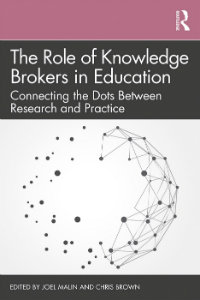How Mobilizing Knowledge Can Help All Educators Improve Schools


James M. Loy, Miami University
The concept is simple. The spread of new knowledge and great ideas can fuel innovation and drive change in many different ways. After all, that’s how progress and improvement often happen.
What’s far less clear, however, is understanding how this process actually unfolds.
Exactly how does new information move, or mobilize, from one organization to another? Or, for example, how and why do certain research findings escape from arcane academic journals and find a practical use out in the real world?

“The notion that somebody can conduct a study, and then immediately it should influence practice in some way might be a faulty one,” says Joel Malin, Miami University assistant professor of educational leadership. “Because of just how much complexity there is.”
But there are ways to understand this complexity. And according to Malin, one key way involves understanding the critical role of knowledge brokers.
Connecting research and practice
Knowledge brokers are those individuals or organizations that can bridge the divide between knowledge production and knowledge use.
Knowledge brokers often function as information managers, networkers, collaborators, and facilitators. They also exist across a wide range of industries. Though, in education, their role in helping teachers and administrators improve schools by turning evidence into action is not yet well understood.
So Malin and his colleagues study how knowledge brokers provide that vital link that allows research to manifest in practice, as well as how knowledge can circulate into new settings in other ways.

“For example,” he says, “maybe teachers are experimenting on some new technique, and they come up with something that’s working. How does that end up making its way into other schools?”
This concept is explored extensively in a new book, The Role of Knowledge Brokers in Education. Connecting the Dots Between Research and Practice, which is co-edited by Malin and Chris Brown, a professor in Education at Durham University.
“We’ve been able to secure chapters from people all over the world,” Malin says, “representing the U.S., Canada, Spain, England, Scotland, Germany, and Moldova. And [we’re] excited about trying to look at knowledge brokering broadly in terms of the many different ways it can manifest, the different models that are out there, and how knowledge brokering might vary in different contexts.”

A resource for all educators
Malin and Brown open the book with an overview of the topic, followed by their chapter on the “who, what, why, and how” of knowledge mobilization in the U.S.
By analyzing three prominent educational intermediaries including Edutopia, the Marshall Memo, and Harvard University’s Usable Knowledge, Malin and Brown -- along with their co-author and Miami educational leadership graduate student Angela Șt. Trubceac -- discuss the variety of ways knowledge is mobilized today.
“I'm a former school teacher,” Trubceac says. “And as a school teacher, we are always in a search. What is new? What is interesting? What works? How can I copy that, or apply it to my context? And so on. So from this perspective, it's a great contribution. Because this chapter emphasizes that, yes, it's possible. [These resources] are available.”
Subsequent chapters are provided by several internationally recognized scholars, who discuss the challenges and benefits of connecting research to practice, offer decision-making recommendations, provide strategies and insights for educators at all levels, and more.
“We are the first to bring together a comprehensive volume like this in the field of education,” Malin says. “And we think it has implications for multiple audiences.”
“It has uses for teachers, and for educational leaders, to have a better understanding of knowledge brokers’ motivations, and what different brokers can offer them,” he explains. “It can also give brokers themselves new ideas, or maybe a new theoretical understanding about their work and the decisions they make, to help them self-reflect and self-evaluate. And it holds implications for researchers as well—for instance, those who want to get their work into the hands of educators, who want for their work to have a bigger impact.”

